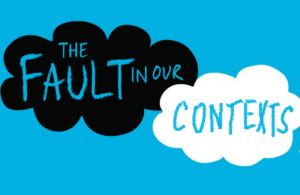Cats, dogs, dolphins, chimps, and humans – we’re all technically animals, but do some of us deserve more rights than others? There is a tiny town in northern Spain that thinks not. In late July, the municipality of Trigueros del Valle unanimously passed a local law which officially defines cats and dogs in the town as ‘non-human residents’.
“The mayor must represent not just the human residents but must also be here for the others,” the Spanish town’s mayor told The Independent.
While it might seem a bit far-fetched, the idea that non-human animals should be given human-like rights is gaining traction in jurisdictions as far as India and Argentina to Romania and the United States. But what are the cultural and philosophical implications of all this? And isn’t giving ‘human-like rights’ going a bit too far? I don’t think so, in fact, I think we should be prepared to grant not just human-like ‘rights’ or ‘residency’ to animals, but indeed we should be prepared to give them citizenship and let their interests be directly represented in our governments.
Such a radical shift in thinking about non-human animals is unlikely to occur quickly, and there seem to be some clear stepping stones which will first need to reached. One of the most pivotal steps centres around the debate of whether some animals have a level of ‘personhood’ that can be legally meaningful.
Personhood – that an entity has the essential capacities of a person, like self-consciousness, intellect, experience of suffering and complex emotional states, etc. – comes in different forms and to varying degrees. We would not say, for instance, that a human infant was criminally liable for their own actions, even if those actions caused serious harm to another human, since we know the infant wouldn’t be properly aware of their own actions or the consequences of those actions. However, if a competent adult harmed an infant, that adult would definitely be criminally liable for their own actions, since they have adequate foresight and self-awareness. In this context, then, both the adult and infant have different levels of legal personhood and this is reflected in how the law treats them.
If non-human animals like chimpanzees or orangutans could be argued as being at least somewhat equivalent in a legal or moral sense (courtesy of their intellectual and other human-like capacities) to a human person – even on the level of a human infant – then courts could be persuaded to recognise them as non-human persons. And with the status of personhood can come great things.
The English Somerset case, which gave an African slave his freedom in 1772, was prompted by a writ of habeas corpus, a legal summons that requires the custodian of a prisoner to demonstrate before a court that their detention of the person in question is lawful. Animal rights activists in Argentina and New York have argued that the same legal summons should be employed to require a zoo or university to demonstrate their lawful detention of an orangutan or chimpanzee, respectively. The question for such cases hinges on whether the zoo or university is detaining a legally-defined person.
While these cases are currently ongoing, some politicians and scientists have already made up their minds, and it’s easy to see why. Advanced non-human animals like dolphins or chimpanzees or others are highly intelligent and share huge swaths of genetic heritage with us humans. They lead rich emotional lives and have human-like capacities such as self-awareness.
But personhood should not be the only game in town when it comes to thinking about animals. My pet dog is quite dull, but that shouldn’t mean I can get away with mistreating it any more than I could get away with mistreating a clever orangutan. The ability to experience suffering, therefore, seems to be important in this regard. That said, there can be indirect negative effects or suffering which results from killing something as basic as even an ant (even though it’s unlikely insects experience pain). Sure, stepping on one accidently from time to time won’t cause a catastrophe, but we couldn’t live a world without ants altogether. They, along with the rest of the insect class, form the basis of the food chain. Crops couldn’t grow and cows couldn’t eat grass if it weren’t for creepy crawlies. So even suffering doesn’t seem to capture everything there is to value about animals. In a broad sense, I think most of us recognise that we ought to value our ecosystem as a whole, if not for its own sake then for our own survival’s.
I’m not arguing that trees or bees ought to be considered our co-citizens, however, but rather the non-human animals which form a part of our societies: companion animals like dogs and cats, produce or working animals like horses and sheep. These are the animals which we have actively enlisted into the ranks of our societies for our own purposes. They are the biggest modern caste group worldwide and are regularly exploited for financial gain without full consideration of their welfare.
Just like we wouldn’t expect a co-citizen to work their whole lives and never be given adequate time for rest and relaxation, we shouldn’t expect this of animals. In most high-income countries, we expect that our co-citizens will enjoy a basic level of provision and protection in the forms of food, medicine, and housing; the same should all be true for animals as well.
What might be a touch difficult is getting hoof and paw prints on electoral votes in a meaningful manner. Indeed, it’s highly unlikely any non-human animal could be expected to understand the complexities (and absurdities) of modern politics. This doesn’t mean, however, that we shouldn’t seek to know what is in their best interests and have those interests represented in our governments’ decision-making and services. We don’t expect children to know their best interests or be able to fully care for themselves outside of their families, but we still make concerted efforts to care for children who cannot be cared for by their own families; we, as a society, take it upon ourselves to care for them and to avoid their being exploited or abused. In the same way, perhaps we ought to create policies and agencies which care for animals.
It is likely that the way we treat animals will change and one day we might even call them our co-citizens. A few decades ago the animal rights movement seemed to some like a fringe fad, but it is now part the mainstream. Call me barking mad, but I suspect that in a few more decades we might be talking about co-citizen adoption agencies rather than pet shops.









